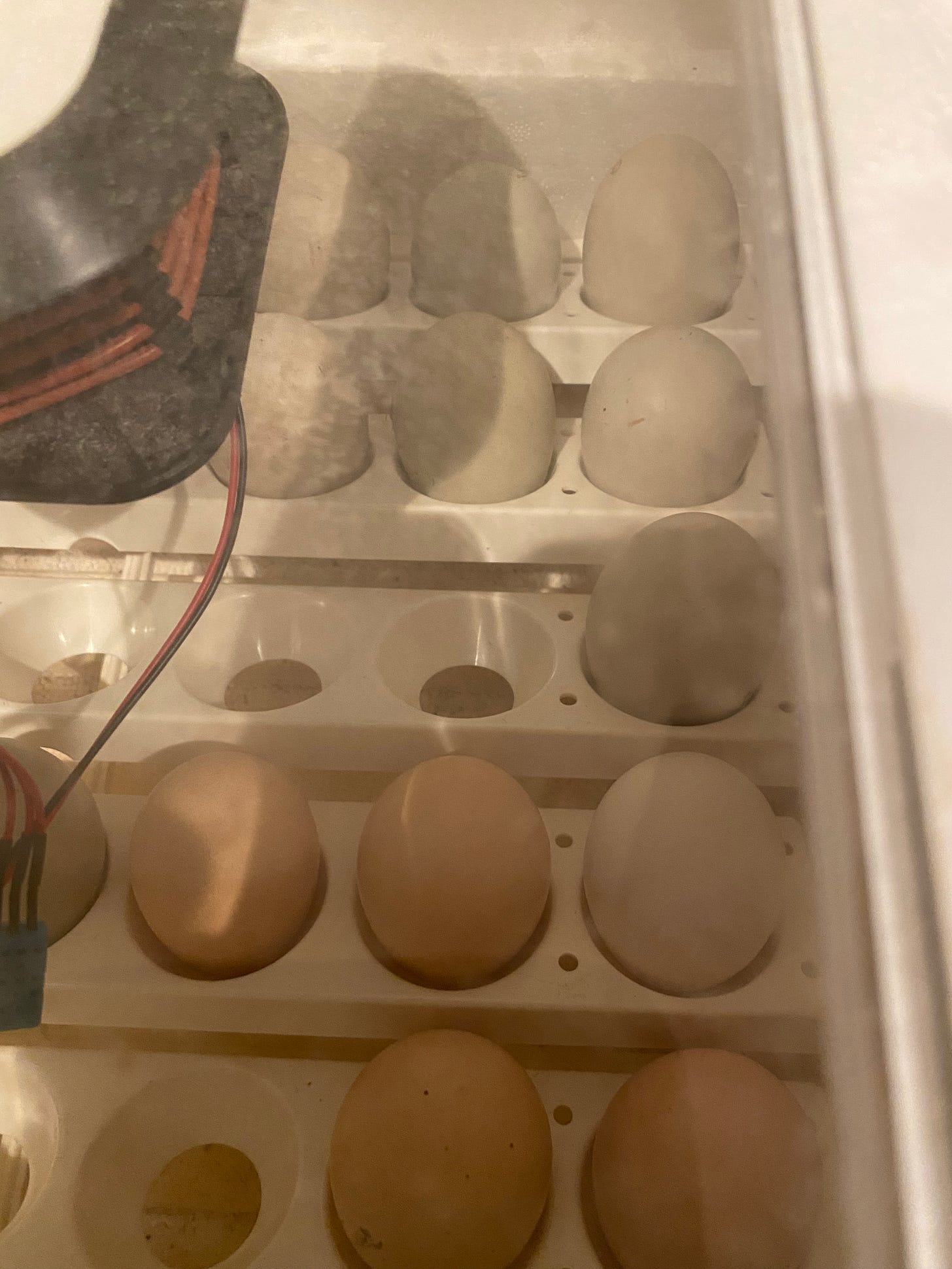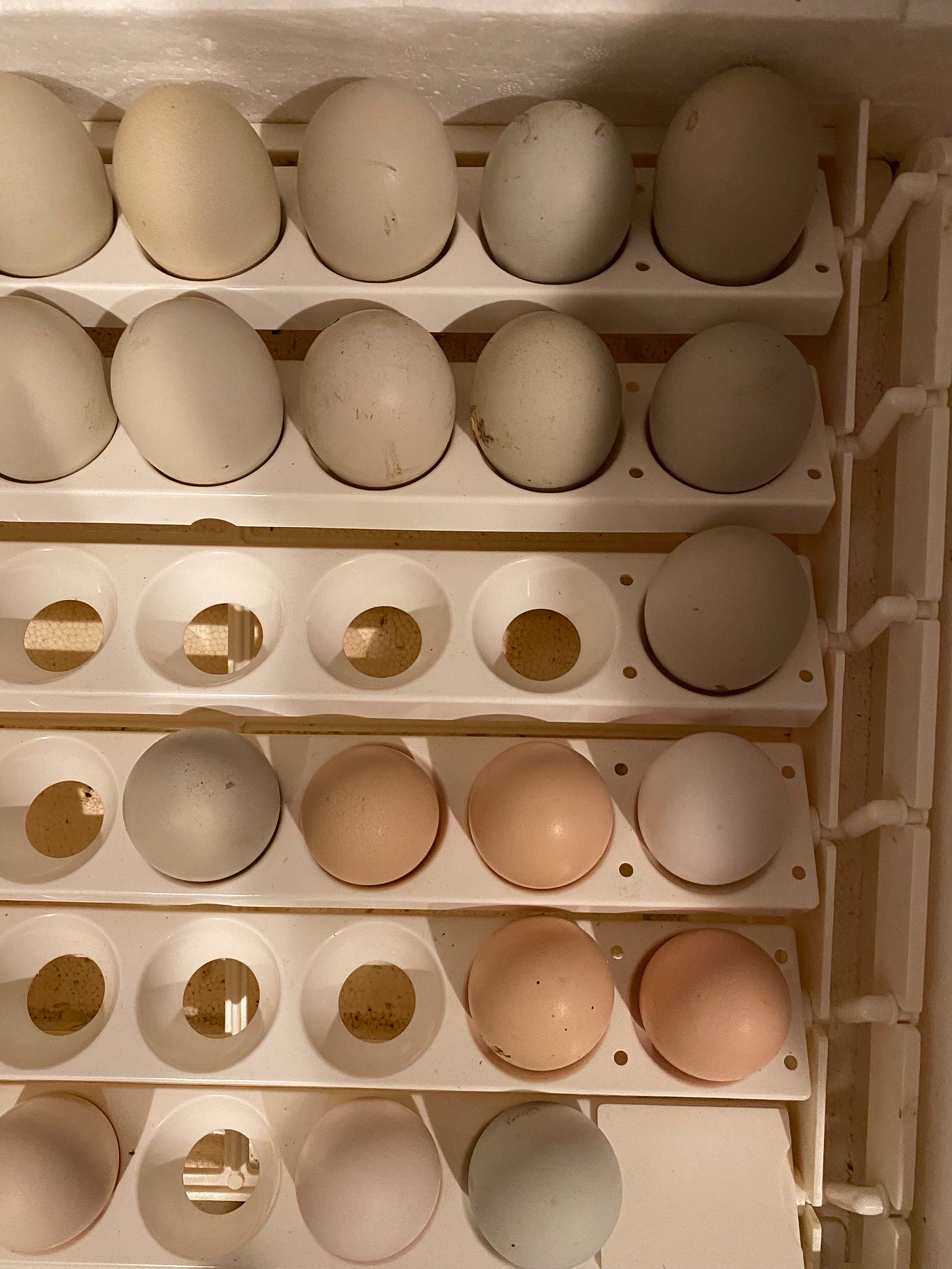Most people don't think of fall as a time for chicks. Baby chicks are associated with spring and Easter, not Pumpkin Spice Lattes, red and golden leaves, and fur-lined boots. However, fall is the ideal chick time if you have the infrastructure to support them.
If you're in the egg game, even just for personal use - fall chicks are the way to go. Spring chicks don't lay until mid-to-late summer, just in time for a few months of eggs before the season ends.
Chickens, and many other egg layers, are photosensitive - which means they respond to light. Their bodies naturally start to slow down or even stop laying as the days get shorter. Many chicken people, including me, help stave off this declining egg production by adding a light to their chicken coop.
That said, even with a light, chickens don't do their best laying during the winter months.
With new chicks, if you can get through the baby stage in winter before the longer days of spring and summer begin, you'll start with fresh layers. It's perfect.
So, I have the incubator full of jewel-toned fertilized nuggets right now to hopefully get a baby pen full of peepers in a few weeks. I'm already getting a jump on spring egg production. I'll grow the chickens until they're fully feathered under a heat lamp in the outbuilding and will have girls ready to lay as soon as it starts to heat up next year.
What's the difference between the eggs in my incubator and the ones people buy in the grocery store? We have a rooster, Rooster Cogburn, who is currently servicing the female chickens. When they lay, the eggs they deposit have all the material from both the male and female sides to become chicks.
Most commercial eggs aren't fertilized because their hens are not usually exposed to roosters. Fertilized eggs are completely edible as long as we catch them before they start to grow chicks.
By the way, most people don't have to worry about cracking an egg and accidentally finding a blood spot or even a tiny chick, but that is part of the package.
Mark, my husband, told me the story of one of his first memories: baking a cake with his grandmother when she cracked an egg reasonably far down the chick-development road. I don't know, by the way, why core memories are always weird stuff like that, but it sure seems to happen that way.
To prevent chick development in our eggs, I gather them twice daily and put them straight into the refrigerator. Although we don't need to refrigerate them to keep fresh the chill prevents babies from taking.
By the way, if you're not a farm fresh egg expert (and why would you be?), we don't need to refrigerate our eggs because they are laid with a protective layer called a "bloom" out of the chicken. When eggs are laid for sale in the store, they're washed, which removes the bloom and requires refrigeration.
Now that I have a batch of eggs I want to hatch, the incubator creates the perfect environment.
Part of the process of incubating eggs is "candling." We shine a bright light into the egg to reveal what's happening inside. The first step of development is watching for blood vessels to start to form. Next, a little dark spot will become visible amid those vessels. That little spot is a tiny chicken.
A few days after it can be seen, the spot starts to dance. It does a little chicken jig in the egg, and it's both bizarre and magical. Like a scene out of a science fiction movie, the chickens will dance until they get too big to move.
Watching a small shadow move around in an egg, knowing it will soon emerge as a chick - makes it impossible to deny the miracle of life. Hatching eggs is an accessible way to savor the mystery surrounding existence. There's nothing like looking at something that seven days earlier was merely an omelet ingredient and now contains a tiny dancing chicken to contemplate the nature of life.
We're in the middle of the "tiny dancing spot" portion of egg incubation right now, and checking to see their development is my favorite "chore." Flipping on my candling light means I'm about to see life emerge before my eyes. It's bananas.
In addition to feeling awe and wonder, there’s certainly a little spark of power that surges through me when the eggs start to form chicks. I took all the elements, chickens, roosters, eggs, and my incubator and put them together in the right combination for life to emerge. It’s a similar feeling to watching seeds start to push their way out of the warm soil. If nobody else is around to hear me, I’ll often cackle maniacally with my best Dr. Frankenstein impression while candling, “It’s aliiiiiiiive.”
It only takes 21 days for an egg to go from an ingredient to a fluffy little chick - eggs are magic.
Do you like reading weird stuff about urban farming even if you have exactly zero intention of ever doing it yourself? Subscribe today! You’ll get a free one on Thursdays (or early Friday morning if I have to write overnight because my kids were being maniacs)
If you REALLY want to be my favorite person, please consider a premium subscription!
Do you like eggs? What’s the best way to cook them? Leave a comment.
I posted another “Notes from the Urban Farm” podcast - which is really just me talking to myself with minimal editing. Check it!
LOVE YOU, MEAN IT!
<3,
K







Really cool stuff about eggs - I was SO hoping you'd put a video up when you started describing the dancing chicken, then I scrolled down and BINGO! That's really cool!
I grew up in Israel in the 70s - even commercial eggs at that time were fertilized. I never found the start of a chick, but did find blood. Then it all disappeared - the complete mechanization happened, and no more blood. I also worked for a short time at the Turkey Nursery on a kibbutz - that is a whole other story.